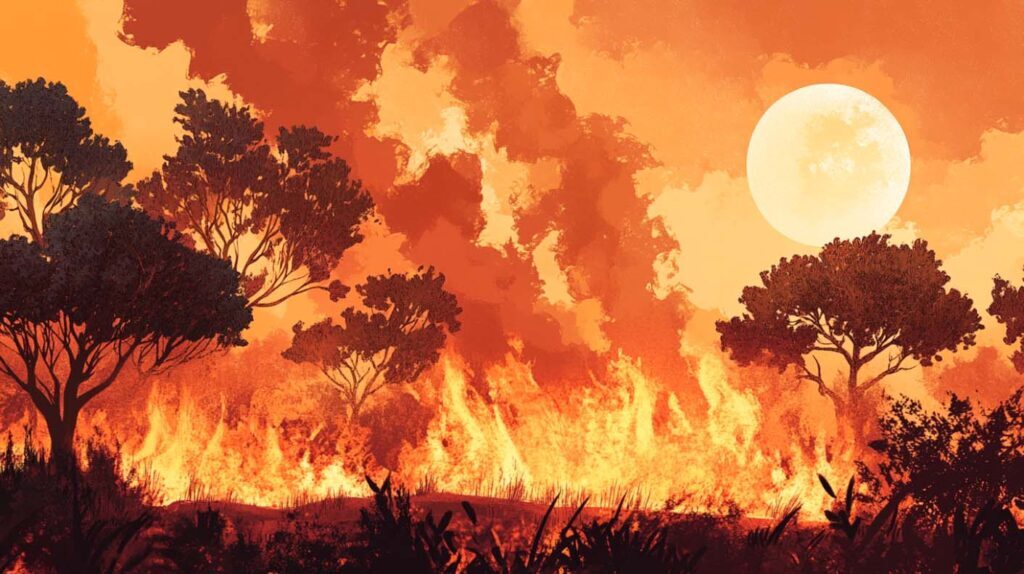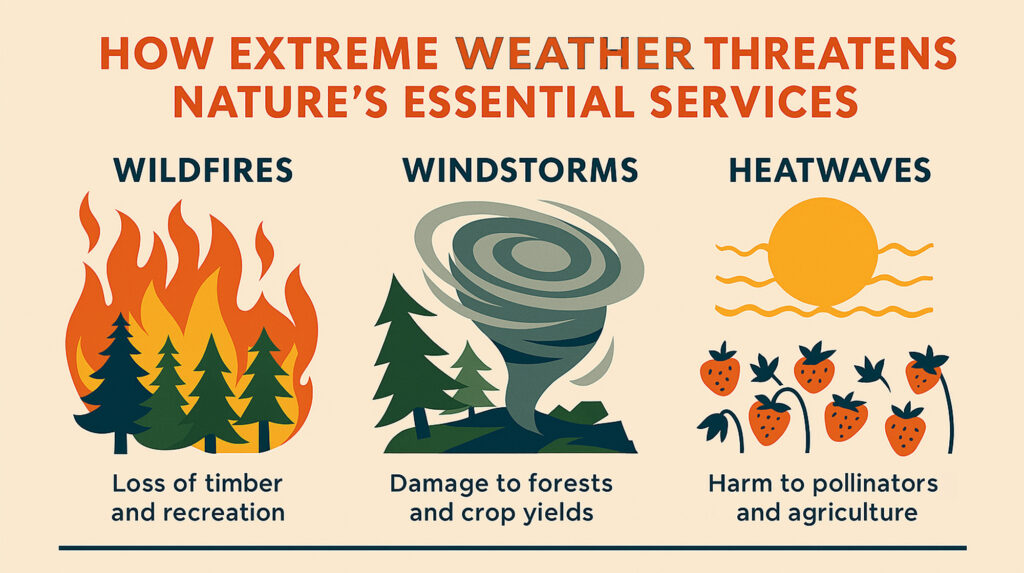Connecting climate disturbances and natural processes
How much will strawberry harvests shrink when extreme heat harms pollinators? How much will timber production decline when windstorms flatten forests? How much will recreational value disappear when large wildfires sweep through mountain towns?
These are some critical questions that a new computer simulation is helping answer. Researchers, including U-M’s Peter Reich, presented a model that aims to understand how extreme weather events, worsened by climate change, will affect ecosystems and the benefits they provide to humans.“We’re not the first people to try this and we won’t be the last, but it’s an attempt to holistically connect climate disturbances and natural processes,” says Reich, a professor at the U-M School for Environment and Sustainability. “It’s linking biodiversity and different kinds of ecological responses, some of which are services to people, and answering how we might go about trying to put dollar values on those services.”
Anticipating impacts on ecosystems
Based on the model, a Minnesota forest could lose up to 50% of its timber revenue if a severe windstorm hits. But even if all trees are flattened, Reich said, the exact value of the economic loss will vary markedly depending on the mix of species and the size of the trees.
“With climate change, there’s an urgent need to incorporate the impacts of extreme events like mega-fires and hurricanes on the benefits nature provides,” says Laura Dee, first author of the new report published in Nature Ecology and Evolution and associate professor of ecology and evolutionary biology at the University of Colorado.
“This research is an important step toward anticipating impacts to ecosystem services so that we can adapt management strategies accordingly.”
Scientists use the term “ecosystem services” to refer to the essential functions that nature provides to support human life and well-being. Tree roots purify water, insects pollinate crops and forests lock away carbon, helping to stabilize the climate. In addition to these tangible benefits, mountains, lakes and oceans offer recreational enjoyment for people and hold cultural significance for communities.
Going steady — not
Previous models for predicting how ecosystems respond to climate change tend to assume that changes are steady. For example, a gradual increase in global temperatures of up to 1.5°C. But as climate change makes extreme weather events like wildfires and floods more frequent and severe, the impacts from rapid disturbances have become significant.
Dee, Reich, and the team developed a new mathematical model that tracks how the probability of an extreme weather event affects certain species and the ecosystem services they provide. The model also incorporates how people value these services.
To show the model’s potential, the team applied it to calculate the possible consequences of extreme windstorms in a mid-latitude forest in northern Minnesota. The model considered how winds have different effects on different tree species, each of which has distinct economic value. For example, white cedar trees are more resilient to windstorms than pine or spruce trees, but the latter can sell at a higher price.
The model suggested that a windstorm, depending on its intensity, can slash the total timber value of the forest by 23% to 50%. Recreational opportunities like hiking and camping would also take a hit.
“We know that all aspects of ecological health are important, but monetizing the services we get from nature is illuminating,” Reich says.
For example, no one wants to lose trees to wildfires, he says. But people may be more active in protecting nature when they understand the economic loss that accompanies the loss of nature and biodiversity.
Valuing nature’s contributions
The new model also helps to identify the areas where scientists should prioritize burning to achieve the greatest reduction in fire risk, while also considering other benefits trees provide, such as removing carbon dioxide from the atmosphere and filtering water.
The United Nations’ World Meteorological Organization announced March 19 that more than 150 unprecedented extreme weather events struck Earth last year. With disturbances becoming more common, future Gross Domestic Product analyses, for example, should start incorporating the impacts of climate change, Dee says.
“Nature’s contributions to people have not typically been valued and are usually left out of key decision-making processes when developing land management policies and strategies,” she said. “If we fail to consider the growing risks from extreme weather events, we could lose more than we realize.”




